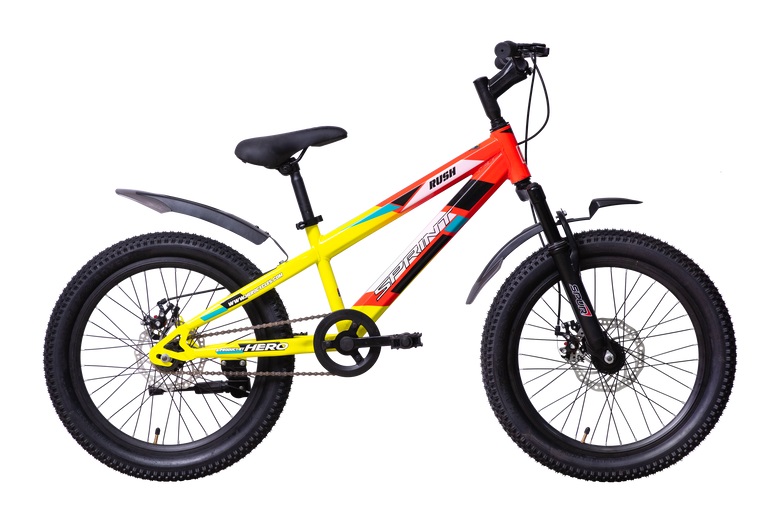When it comes to choosing the right bicycle for your child, one of the most critical decisions involves the gearing system. Should you go for a simple, easy-to-maintain single-speed bike or opt for a multi-gear model that offers flexibility and performance on various terrains? This question is especially important when considering boys bicycles, as their energy, curiosity, and enthusiasm often take them far and wide across playgrounds, neighborhood streets, and sometimes even off-road paths.
Both single-speed and multi-gear bicycles come with their own sets of advantages and drawbacks. The choice often depends on the age of the rider, riding goals, terrain, and budget. In this article, we’ll dive deep into the world of single-speed and geared bikes to help you make an informed decision that best supports your child’s development, fun, and safety.
Understanding the Basics
Before comparing the two options, it’s important to understand the fundamental differences between single-speed and multi-gear bicycles.
Single-Speed Bicycles
A single-speed bicycle has only one gear ratio. That means there’s no mechanism for changing gears, and the same effort must be exerted no matter the terrain. These bikes are straightforward in design and often the go-to choice for younger kids and beginners.
Multi-Gear Bicycles
Multi-gear or geared bicycles come with multiple gears, usually between 6 and 21 or more, that the rider can switch between. Gears make pedaling easier or harder, depending on the terrain. For example, lower gears make climbing hills easier, while higher gears help when going fast on flat roads.
Age and Skill Level
Age and cycling experience are two crucial factors in deciding the type of bike that’s right for your child.
Younger Children (Ages 3-7)
For younger children who are just learning to ride, single-speed children cycle options are ideal. They are easier to handle, lighter, and have fewer components that could confuse or distract a beginner. Plus, without gears, there’s one less thing to worry about when learning basic balance and coordination.
Older Boys (Ages 8 and Up)
Once your child is comfortable riding and starts exploring varied terrains like hills, gravel paths, or long-distance rides, a multi-gear bike can significantly improve the experience. It allows for more control and makes it easier to ride in different conditions.
That said, the transition to a geared bicycle should happen only when the child demonstrates the maturity and interest to understand and operate gear systems. Otherwise, the added complexity can become more of a hindrance than a benefit.
Pros and Cons of Single-Speed Bicycles
Pros
- Simplicity
The lack of gears makes the bike easier to understand and ride, especially for younger children. There’s no need to worry about which gear to use or how to shift properly. - Lower Maintenance
Fewer moving parts mean less that can go wrong. There’s no derailleur to adjust or repair, which reduces maintenance costs and time. - Affordability
Single-speed boys bicycles are usually more affordable than their geared counterparts. For families on a budget, they offer excellent value for money. - Lightweight
With fewer components, single-speed bikes are generally lighter, making them easier for kids to handle and control.
Cons
- Limited Terrain Adaptability
Going uphill or riding on uneven surfaces can be difficult without gears. The bike becomes less versatile for different types of riding. - Lack of Speed Control
On flat terrain, there’s only so much speed a rider can gain without switching gears. This might frustrate older or more adventurous riders.
Pros and Cons of Multi-Gear Bicycles
Pros
- Versatility
Gears allow riders to tackle different terrains and slopes with greater ease. Whether it’s uphill, downhill, or cruising on a flat road, the right gear can make pedaling more efficient. - Skill Development
Learning to use gears teaches mechanical understanding and decision-making. It’s a valuable skill that prepares kids for adult cycling. - Long-Term Use
Multi-gear bikes often grow with the child. As boys develop their riding style and strength, having gears lets them challenge themselves more.
Cons
- Complexity
For beginners, gears can be confusing and intimidating. Improper use can also lead to mechanical problems or even minor accidents. - Higher Maintenance
More components mean more potential issues. Gears, derailleurs, and shifters all require occasional adjustments and repairs. - Cost
Geared children cycle options tend to be more expensive, both in initial purchase and in long-term upkeep.
Terrain and Riding Environment
Your child’s usual riding environment plays a major role in deciding between single-speed and multi-gear bicycles.
Flat Urban Areas
If your child mostly rides in parks, sidewalks, or flat residential streets, a single-speed bike is likely sufficient. The simplicity and cost-effectiveness outweigh the need for gear versatility.
Mixed or Hilly Terrain
If the local area includes hills, trails, or longer paths that your child likes to explore, a multi-gear bicycle will offer better control and a more enjoyable ride. Shifting gears can reduce fatigue and improve overall performance.
Safety Considerations
Safety is always a top priority when choosing a bicycle for kids.
Braking Systems
Most single-speed bikes come with coaster brakes (pedal backward to stop), which are simpler for younger riders. Multi-gear bikes usually feature hand brakes, requiring more coordination but offering better control.
Whichever type you choose, ensure your child is comfortable and proficient in using the braking system before heading out for longer rides.
Helmet and Accessories
Regardless of the gearing system, always pair the bike with a properly-fitted helmet. Additional gear such as elbow pads, knee guards, and reflective clothing further enhances safety.
Maintenance and Durability
Single-speed bikes win the contest in low-maintenance needs. Since there are fewer parts to worry about, upkeep is simpler and less costly.
Geared bikes, while more capable, require periodic checks of the derailleur, gear cables, and chain. Regular maintenance ensures that shifting remains smooth and that wear and tear do not compromise safety.
Choosing the right bicycle for your child is an investment not just in a product, but in their physical development, confidence, and sense of freedom. Both single-speed and multi-gear boys bicycles have unique benefits tailored to different stages of growth and riding conditions.
By considering factors like age, terrain, budget, and skill level, parents can make informed choices that set their children up for safe, joyful, and enriching cycling experiences. Whether you go for the simplicity of a single-speed or the versatility of a geared bike, the most important thing is to encourage your child to ride confidently, safely, and often.

